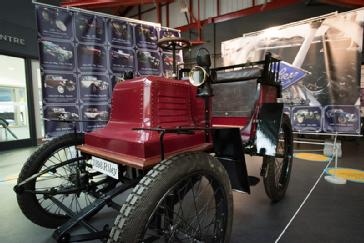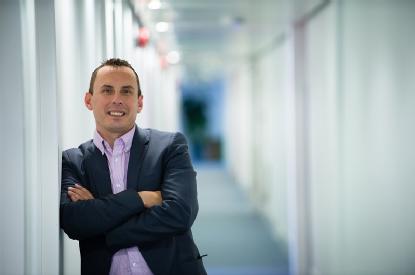WMG News
Used electric vehicle batteries could be used for rickshaws in Bangladesh
Used EV batteries could be used to power rickshaws in Bangladesh, as researchers from WMG, University of Warwick, seek to find out how they can be repurposed for the rickshaws and lower peoples’ carbon footprint.
Motorised rickshaws, also known as easy-bikes, have gained popularity in Bangladesh due to their cost-effectiveness with one million of them all over the country.
However, the easy-bike currently uses a lead-acid battery for power, which has a lifetime of 6-12 months and therefore increases the operating cost as well as the carbon footprint.
In order to reduce the carbon footprint, researchers at WMG are exploring the possibility of repurposing used EV Li-ion batteries thanks to a £25,000 grant from Global Challenges Research Fund (GCRF), an award from the UKRI aimed to deliver scalable solutions to issues faced by low and middle-income countries.
Currently, Li-ion batteries retire from EVs after reaching 70-80% of their state of health (SoH). At 70% SoH, the lithium-ion battery still have 3 times higher energy density than a new lead-acid battery, and potentially can have a lifetime of 3-5 years in easy-bike application.
The researchers hope to repurpose the batteries to improve the energy storage life from 6-12 months to 3-5 years, which in turn will reduce the number of batteries being recycled and improve the ecosystem.
The new application of Li-ion batteries will be better environmentally without an additional cost in transport. As easy-bike replaces manual driving, the quality of life will improve significantly and bring a socio-economic change to a large community in Bangladesh. Furthermore, this development could reduce the consumption of grid-connected electricity which could be used to develop industries and infrastructure.
In fact, there are currently one million rickshaw pullers in Bangladesh who earn $4.8 billion every year. The new development in easy-bikes will directly improve their economic status. A few million people involved in vehicle support such as mechanics and manufacturing industries will also be benefited.
This project eventually could lead to mass production of second-life Li-ion batteries in Bangladesh, in conjunction with UK automobile industries, which will create job opportunities for thousands of people.
 Dr Mohammad Al-Amin from WMG, University of Warwick comments:
Dr Mohammad Al-Amin from WMG, University of Warwick comments:
“To prevent climate change, all cars in the future will need to be electric. However, the batteries in EVs once they have reached their end of life, for car purposes, is something that can be explored more, as there is still energy left in them to be used.”
“If we can re-purpose them to be used for easy-bikes in Bangladesh it will help lower their carbon footprint and provide the country with a new economy. Thousands of jobs opportunities could be created both in Bangladesh and the UK.”
ENDS
13 NOVEMBER 2019
NOTES TO EDITORS
High-res images available at: https://warwick.ac.uk/services/communications/medialibrary/images/october2019/mohammad_photograph.jpg
About GCRF - https://www.ukri.org/research/global-challenges-research-fund/
UK Research and Innovation works in partnership with universities, research organisations, businesses, charities, and government to create the best possible environment for research and innovation to flourish. We aim to maximise the contribution of each of our component parts, working individually and collectively. We work with our many partners to benefit everyone through knowledge, talent and ideas.
Operating across the whole of the UK with a combined budget of more than £7 billion, UK Research and Innovation brings together the seven research councils, Innovate UK and Research England.
FOR FURTHER INFORMATION PLEASE CONTACT:
Alice Scott
Media Relations Manager – Science
University of Warwick
Tel: +44 (0) 2476 574 255 or +44 (0) 7920 531 221
E-mail: alice.j.scott@warwick.ac.uk
Replica of first Riley car will be back on the road with help from WMG
• A replica of Percy Riley’s 1898 Voiturette has been built by members of the Riley Motor Club and Riley Register with the encouragement of William Riley’s grandson Victor Riley
• WMG, at the University of Warwick, are sponsoring £2,000 to help with the construction of a replica engine.
• The car featured was the first to have a mechanically operated inlet valve and led the way for the British motor industry and prevented royalty claims.
• There was a launch event at the Coventry Transport Museum on the 6th November to showcase the replica prior to the engine being made.
In a bid to get the first Riley car recreated and back on the roads of Coventry for City of Culture 2021, WMG, at the University of Warwick, are helping with sponsorship to construct a replica engine which will complete a working replica of Percy's Riley 1898 Voiturette.
The launch of the replica, in its near finished state, was revealed at the Coventry Transport Museum, on 6th November by the Lord Mayor of Coventry, Councillor Linda Bigham, alongside Victor Riley, WMG and invited guests.
The Riley car company started in 1890 as the Bonnick Cycle Company of Coventry before William Riley Jr incorporated the Riley Cycle Company in 1896.
His son, Percy Riley started his first car secretly, aged 16, in 1896 and completed its build in 1898 then drove it to Stratford upon Avon to test the car. By 1903 the Riley Engine Company was established, and in 1919 the company changed its name to Riley (Coventry) Limited.
Driven by Percy and his three brothers, the company’s focus shifted to manufacturing entire cars in early 1906.
Professor Dave Mullins, Interim Head of Department WMG comments:
“The Riley brand has played a leading role in the City’s automotive manufacturing industry and we are delighted to be able to support such a significant project for the Riley Motor Club. The family owned company has always focused on being innovative and entrepreneurial, and these characteristics align with those of WMG. We look forward to showcasing the Voiturette during the Coventry City of Culture 2021. ”
Victor Riley, the grandson of William Riley, comments on the difficulty of constructing a replica especially in light of the fact the original car no longer exists:
“Much experimentation has been carried out particularly in some detail of the steering geometry. With help from the Souck Bucks Riley Register members were able to put some of the components together to give an idea of the car taking shape. We are now at the stage where we need to complete the engine to get a fully working replica, and we’re grateful for the sponsorship from WMG, University of Warwick, which will enable this to happen.”
Lord Mayor of Coventry, Councillor Linda Bigham, said: “Coventry is the birthplace of the British Motor Industry. It’s important that we celebrate this and are proud of the innovation, which is still very much alive today especially in the green revolution.
“That’s why I was so pleased to be able to unveil the Voiturette today. With our year as UK City of Culture fast approaching, having a working replica of this iconic car will help us showcase our past and celebrate our future.”
The 1898 Voiturette will be on the Rily Motor Club stand at the Classic Car Show at the NEC from 8th to 10th November. It will share the stand with the 3rd car of the 1906 first production car, 1919 side valve car and a 1967 Elf.
WMG hiring engineering and manufacturing experts, including prestigious Regius Professor
Three new exciting opportunities for engineering and manufacturing experts are being advertised at WMG, University of Warwick, including Regius Professor of Manufacturing – which was last held by the late founder of WMG Professor Lord Bhattacharyya.
The three engineering and manufacturing roles being advertised at WMG, University of Warwick are:
1. Regius Professor of Manufacturing
2. Professor (Research Director) in developing WMG’s research strategy
3. Associate Professor or Reader in Future Mobility
The Associate Professor or Reader in Future Mobility will focus on Intelligent Vehicles research, exploring ways to move people and goods around in a safer, more efficient and environmentally friendly way.
WMG is partnered with many local businesses, keeping the West Midlands at the forefront of autonomous vehicle research, and this new Associate Professor or Reader will be working with Government and industry funded projects to exploit new ideas and technologies to look beyond traditional, infrastructure-heavy approaches to transport, and create innovative ways to improve vehicles and make journeys better and accessible to all.
The Professor (Research Director) will lead the development of WMG’s research strategy and provide academic leadership in their chosen field, to keep WMG at the forefront of innovation in research, education and knowledge transfer activities.
Finally the Regius Professor of Manufacturing which was bestowed by Her Majesty the Queen in 2016 was held by the founder of WMG the late Professor Lord Bhattacharyya. As WMG enters its 40th year in 2020 an exceptional researcher is sought to shape the future of manufacturing.
Professor David Mullins, Interim Head of WMG at the University of Warwick comments:
“WMG is at the forefront of research and innovation. As a key element of our future strategy and leadership, we are recruiting three senior engineering and manufacturing specialists with a passion and exemplary research and impact track record in areas from electrification and intelligent vehicles, to advanced manufacturing and materials, health and wellbeing and cyber security.”
ENDS
29 OCTOBER 2019
NOTES TO EDITORS
For more information about the Associate Professor or Reader in future mobility see: https://atsv7.wcn.co.uk/search_engine/jobs.cgi?SID=amNvZGU9MTgzMzAyNSZ2dF90ZW1wbGF0ZT0xNDU3Jm93bmVyPTUwNjI0NTImb3duZXJ0eXBlPWZhaXImYnJhbmRfaWQ9MCZ2YWNfeHRyYTUwNjI0NTIuNTJfNTA2MjQ1Mj0yMzk5NzcmcG9zdGluZ19jb2RlPTYzNQ
For more information about the Professor (Research Director) in developing WMG’s research strategy see: https://atsv7.wcn.co.uk/search_engine/jobs.cgi?SID=amNvZGU9MTgzMjU0MiZ2dF90ZW1wbGF0ZT0xNDU3Jm93bmVyPTUwNjI0NTImb3duZXJ0eXBlPWZhaXImYnJhbmRfaWQ9MCZ2YWNfeHRyYTUwNjI0NTIuNTJfNTA2MjQ1Mj0yMzk5NzcmcG9zdGluZ19jb2RlPTYzNQ
For more information about the Regius Professor of Manufacturing see: https://atsv7.wcn.co.uk/search_engine/jobs.cgi?amNvZGU9MTgzODM0NiZ2dF90ZW1wbGF0ZT0xNDU3Jm93bmVyPTUwNjI0NTImb3duZXJ0eXBlPWZhaXImYnJhbmRfaWQ9MCZ2YWNfeHRyYTUwNjI0NTIuNTJfNTA2MjQ1Mj0yMzk5NzcmcG9zdGluZ19jb2RlPTYzNQ=&jcode=1838346&vt_template=1457&owner=5062452&ownertype=fair&brand_id=0&vac_xtra5062452.52_5062452=239977&posting_code=635
FOR FURTHER INFORMATION PLEASE CONTACT:
Alice Scott
Media Relations Manager – Science
University of Warwick
Tel: +44 (0) 2476 574 255 or +44 (0) 7920 531 221
E-mail: alice.j.scott@warwick.ac.uk
Key industry figure delivers logistics lecture to WMG students
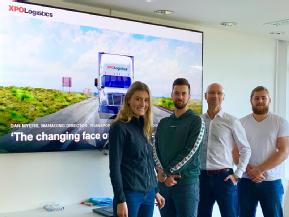 WMG was honoured to welcome Dan Myers, Managing Director, Transport – UK & Ireland, XPO Logistics, as a guest speaker, on the Applied Engineering Programme (AEP).
WMG was honoured to welcome Dan Myers, Managing Director, Transport – UK & Ireland, XPO Logistics, as a guest speaker, on the Applied Engineering Programme (AEP).
WMG prides itself on delivering education programmes with real industry relevance making guest speakers a crucial element of the course. As MD at a leading global transportation and logistics services provider, Dan was able to share his extensive personal experiences with the students.
Dan Myers said: “It was a privilege to be given the opportunity to talk with the logistics leaders of tomorrow at WMG, University of Warwick. We discussed the dynamic changing face of our industry and its importance to the wider economy - the significance of building talented and motivated teams, the potential of technology and automation of the supply chain today and of the future.”
WMG student Kerry Giordan said: "It was interesting to hear from someone working in the business who is able to relate the theory to existing processes and improvements. From our perspective as undergraduate apprentices, it was great to hear that Dan has been in the company for 20 years having working his way up through many levels to Managing Director."
Find out more about the AEP here.
Developing the next generation of transport solutions
The concept of widespread Connected and Automated Mobility (CAM) is quickly becoming something of a reality thanks to a national and global push to develop the next generation of transport solutions. An integral part of the Government’s Road to Zero strategy, CAM is expected to become widely deployed across the UK and will be a key driver behind ambitions to eventually achieve zero accidents, zero congestion and zero emissions on the road.
Evolving into a sector that is predicted to be worth £907 billion by 2035, CAM has also conjured new societal and technological challenges that need to be considered. At WMG, University of Warwick, we’ve been tackling some of these challenges by focusing on how to improve security, privacy and safety in connected and automated vehicles from a cyber-perspective, conducting rigorous testing and exploring innovative technologies in a real-world environment.
Overcoming public anxiety
It’s not surprising to see that earning the public’s trust and subsequently reducing anxiety around this new form of travel is somewhat of a barrier to widespread adoption. However, our work to improve the privacy and safety of connected and automated vehicles will help to demonstrate the scalability and wider benefits of this new technology.
Our real-world testing considers how vehicles will connect with each other, as well as to the roadside infrastructure, and also how parts of this infrastructure can be intelligent in the ways that they share information with each other. Our work considers how this connectivity informs the automated activity of respective vehicles and more importantly influences how we expect vehicles to react when a data breach is attempted. For example, if a hacker manages to access the data in a vehicle or vehicular system, how do we safeguard against compromising the vehicle’s identity and history, how do we protect the locations that the vehicle has visited, or indeed how do we control what the vehicle does next in terms of its interactions with the roadside and other vehicles following a breach.
Transferring information within the roadside infrastructure
When a vehicle is travelling down a road it may meet multiple vehicles in a short space of time. In order to check the identity of these vehicles, the key of the other vehicle needs to be verified. However, having to check this in-Cloud infrastructure creates additional communication overhead, increasing the time before the vehicle receives the necessary verification. Instead, through the use of ‘Decentralised PKI’, vehicles can verify messages much faster as the key information is distributed over Edge infrastructure that sits next to the road. Essentially, this means that the roadside infrastructure can communicate with each other and directly transfer shared information, such as traffic levels, vehicle speed and direction. This eliminates the reliance on Cloud servers, saving communication time.
Protecting a vehicle’s identity
For a vehicle to send and receive these sorts of messages from other vehicles and the roadside effectively and reliably, it is important that the messages it sends contain proof that the vehicle is who it claims to be; these messages can be transmitted between cars or the road’s infrastructure from up to 500 meters away. Our ‘Group Signatures’ solution proves a vehicle’s identity without allowing that individual vehicle to be tracked over a long time. This method only indicates that the vehicle is a member of a group, making it much harder for privacy to be compromised, revealing the history of all the locations a respective vehicle, and therefore individual, has visited.
Verifying vehicle identities
However, it is an expensive task for a vehicle to verify another’s identity. Vehicles will have limited computing resources and so will only be able to verify a specific number of identities of senders of messages per second.
Therefore, with our ‘Authentication Prioritisation’ solution, the order in which the identity of messages are verified is decided based on assigning a priority to the messages. These priorities can be defined by vehicle distance, direction of travel or positioning on the road. A higher priority means that those messages are verified first.
Embedding the foundations for effective adoption
As we continue our research into privacy and security issues associated with CAM, our end goal is to achieve the right technological balance to enable effective and quick communication between vehicles and the roadside infrastructure, whilst protecting the privacy of individual vehicles and allowing reliable and safe messages to be filtered by vehicles in order of importance. At WMG, we are making significant strides towards achieving these goals and supporting the ultimate objective of assisting with the widespread adoption of Connected and Automated Mobility on UK roads.
Ceramic industry should bring carbon reducing cold sintering process out of labs and into manufacturing says new research
A new techno-economic analysis, by a team led by a researcher from WMG at the University of Warwick, shows that the energy intensive ceramic industry would gain both financial and environmental benefits if it moved to free the cold sintering process from languishing in labs to actual use in manufacturing everything from high tech to domestic ceramics.
The new research has just been published in the Journal of the European Ceramic Society in a paper entitled “Decarbonising ceramic manufacturing: A techno-economic analysis of energy efficient sintering technologies in the functional materials sector”.
The cold sintering process (CSP) combines heat, pressure and the use of water to significantly reduce energy use as it lowers the temperatures required to produce ceramics to around 300 degrees centigrade. This is far less than other process such as: Conventional sintering, Laser sintering, Fast-firing sintering, Liquid-phase sintering, and Flash sintering which require far more energy and need to reach temperatures ranging from 1400 to 3000 degrees centigrade depending on the process and materials under consideration.
 However the small scale of laboratory-based CSP (typically creating 5 grams of ceramic at a time under lab conditions) has meant that manufacturers have chosen to continue to rely on other significantly higher temperature methods that can either already produce larger amounts or can rapidly manufacture a series of small scale high tech ceramics. The University of Warwick led team believed that manufacturers had not developed anything like a full understanding of the potential financial and environmental benefits of using CSP in manufacturing – particularly as the start-up costs of CSP are much lower than other processes.
However the small scale of laboratory-based CSP (typically creating 5 grams of ceramic at a time under lab conditions) has meant that manufacturers have chosen to continue to rely on other significantly higher temperature methods that can either already produce larger amounts or can rapidly manufacture a series of small scale high tech ceramics. The University of Warwick led team believed that manufacturers had not developed anything like a full understanding of the potential financial and environmental benefits of using CSP in manufacturing – particularly as the start-up costs of CSP are much lower than other processes.
The researchers looked at scenarios for the processing of 3 separate functional oxides used to produce ceramics: ZnO, PZT and BaTiO3. They compared cold sintering (CSP) with a range of other sintering techniques and looked at its return on investment. They found that in all three cases, even after 15 years of use, the low set up costs of CSP made it the most economically attractive sintering option, with lower capital costs and best return on investment as well as considerable energy and emission savings.
The researchers do recognise that the transition from laboratory to industry of CSP will require hugely different facilities and instrumentation as well as relevant property/performance validation to realise its full potential but the potential benefits of doing so are significant .
 Lead researcher on the paper Dr Taofeeq Ibn-Mohammed from WMG at the University of Warwick said:
Lead researcher on the paper Dr Taofeeq Ibn-Mohammed from WMG at the University of Warwick said:
“The rising cost of energy and concerns about the environmental impact of manufacturing processes have necessitated the need for more efficient and sustainable manufacturing. The ceramic industry is an energy intensive industrial sector and consequently the potential to improve energy efficiency is huge”
“Our research is the first comprehensive techno-economic analysis of a number of sintering techniques, comparing them with the recently developed cold sintering process (CSP). We find that there are clear financial and environmental benefits if the ceramics industry was to take the cold sintering process out of labs and into commercial manufacturing”.
Note for Editors: The full research team on the paper were: Dr Taofeeq Ibn-Mohammed from WMG at The University of Warwick; C.A. Randall and S. Berbano both from the Materials Research Institute, The Pennsylvania State University; , K.B. Mustapha from the University of Nottingham; , J. Guo from Xi’an Jiaotong University and Pennsylvania State University; J. Walker from Norwegian University of Science and Technology; S.C.L. Koh, D. Wang, D.C. Sinclair, and I.M. Reaney, all from The University of Sheffield.
The future of mobility: Times are changing
Times are changing
If we are to seize electrification and autonomy opportunities, it’s essential that the UK develops an environment suitable for breakthrough technologies. From domestic charging solutions to developing repeatable testing environments, the UK faces big challenges and we are addressing these through our lead centre for Vehicle Electrification and Connected and Autonomous Vehicles at WMG, University of Warwick.
Electrification shaping a low carbon future
David Greenwood – Professor, Advanced Propulsion Systems at WMG, University of Warwick
Demand for electric vehicles (EVs) is surging in the UK and registrations of plug-in cars increased by more than 160,000 between 2013 and 2018. With the electrification industry estimated to be worth over £6billion by 2025, the next decade presents a massive opportunity.
As our society continues to grow, transformation in energy and mobility is required to create sustainable environments. The electrification of transport is shaping that low carbon future. Our vision at WMG is to enable the development of cleaner, safer and smarter vehicles and help drive sustainable mobility across the UK, which aligns with the Government’s ‘Road to Zero’ strategy, aiming to make road transport emission-free by 2050. Our research focuses on establishing advanced hybrid and electrical vehicles, including commercial, rail and marine, battery technology, supply chain, manufacturing and automation.
At WMG, we’re working with the UK Battery Industrialisation Centre to deliver on the UK’s Industrial Strategy ‘Future of Mobility’ Grand Challenge to transform the UK into a world leading battery manufacturer for vehicle electrification.
Connected and Autonomous Vehicles
Siddartha Khastgir – Head of Verification and Validation, Intelligent Vehicles at WMG, University of Warwick
The global Connected and Autonomous Vehicles (CAV) industry is estimated to be worth over £50billion by 2035, with the UK CAV industry comprising over £3billion of this. The UK Government's Industrial Strategy aims to bring fully autonomous cars without a human operator on UK roads by 2021, which will make us one of the first countries to achieve this.
The CAV vision is motivated by the potential societal benefits the technology offers – increasing safety, decreasing traffic congestion and driving lower emissions. At WMG, we’re striving to deliver these through Intelligent Vehicles research exploring Verification and Validation, Communications (i.e. 5G), Experiential Engineering, Supply Chains, Cyber Security and Cooperative Autonomy.
Our involvement in research programmes like the £35m Midlands Future Mobility focuses on “smart miles”, proving concepts and getting products to market. Led by WMG, Midlands Future Mobility is an “on-road ecosystem” comprising nine partners with a shared objective – To launch the first service offering of public road testing by mid-2020.
Times are changing.
Realising the Connected and Autonomous Vehicle dream
Siddartha Khastgir, Head of Verification and Validation, Intelligent Vehicles at WMG, discusses Connected and Autonomous Vehicles, achieving the long-term vision, and testing.
The vision
The global Connected and Autonomous Vehicles (CAV) industry is estimated to be worth over £50billion by 2035, with the UK CAV industry comprising over £3billion of this. Additionally, the UK Government's Industrial Strategy aims to bring fully autonomous cars without a human operator on the UK roads by 2021, which will make us one of the first countries in the world to achieve this vision. The CAV vision is motivated by a variety of potential benefits the technology has to offer – increasing safety by reducing accidents and minimising human error, decreasing traffic congestion, driving lower emissions and freeing up drivers’ time in vehicles - enabling individuals to be more productive during the work commute or the school run.
However, in order to realise this vision and the market potential, safe introduction of CAV is crucial. The diverse technological, legislative and societal barriers associated with public deployment of CAV will require significant research to overcome.
A safer way to travel
It is suggested that in order to prove that CAV are safer than human drivers, they will need to be driven for more than 11 billion miles. While this requirement has garnered a lot of publicity, the focus needs to be on what happens in those miles (i.e. smart miles which expose failures in CAV) and not on the number of miles themselves. One will not gain much information about the capabilities of a CAV system if we drive them up and down the sunny roads of a desert.
While prototype CAV technologies have existed for some time now, ensuring the safety level of these technologies has remained at the forefront of development decisions and considerations, and has emerged as a potential hindrance to the commercialisation of CAV technologies.
Presenting hard evidence-based data and trends efficiently will have a significant impact on public adoption of this new technology and the confidence levels invested. Safety is at the forefront of the case for why a future with CAV is more reliable, more efficient and less risky – But just saying this is not enough, people want to see objective insights and make their own informed decisions on how this new technology is safer.
The task of proving this is coupled with the challenge of requiring innovative testing and safety analysis methods, as interactions between large numbers of variables and the environment demand complex solutions and experimentation.
Positioning the UK as a world leader
WMG at the University of Warwick, facilitates collaboration between academia and the public and private sector to drive innovation in science, technology and engineering. Intelligent Vehicles research, at WMG, is focused on supporting the UK’s position as the world leader in CAV research and innovation for a long lasting societal and economic benefit.
Intelligent Vehicles research capability areas include Verification and Validation, Communications (i.e. 5G), Experiential Engineering, Supply Chains, Cyber Security and Cooperative Autonomy. Demonstrating safety, commercial viability and customer desirability pose three of the main challenges associated with realising the CAV vision. The “evaluation continuum” concept for CAV, at WMG, involves using digital technology to simulate various environments and conduct repeatable test track testing before launching trials in the “real-world”. WMG research is leading to the creation of international standards (ISO) for the safe deployment of CAV.
Testing in a virtual world
WMG’s 3D simulator for Intelligent Vehicles, funded by the Engineering and Physical Sciences Research Council (EPSRC), was launched in 2016 at WMG’s International Manufacturing Centre to test real-world robustness and usability of smart, CAV technology. The simulator creates virtual conditions for Intelligent Vehicles, replicating complex driving scenarios, changing lighting conditions, communications interference or unexpected events, all in a safe and repeatable environment.
The success of smart, CAV technologies, or Intelligent Vehicle technologies, will depend upon research and development, which can quickly demonstrate safety, security and robustness. Testing these technologies on-road in real-world driving situations is often complex, uncontrollable and potentially risky for early stage development. It is also reliant on the production of costly physical prototypes.
Industry trends in CAV suggest the widespread adoption of Machine Learning (ML) in the autonomous control systems. ML-systems by their structure are non-deterministic in nature, resulting in different behaviours and a lack of transparency around the CAV system. Therefore, it is often difficult to identify reasons for a particular failure in such ML-based systems and take the corrective measures.
Public road testing by mid-2020
WMG is involved in major research programmes like the £35m Midlands Future Mobility (real-world testbed), which focuses on “smart miles” by proving concepts and getting products to market with quick impact measures. Led by WMG, Midlands Future Mobility is an “on-road ecosystem” comprising nine partners from industry and local authorities all with a shared vision and objective - To launch the first service offering of public road testing by mid-2020.
WMG is also one of the seven centres in the High Value Manufacturing (HVM) Catapult and with “smart mobility” being one of the focus areas for the WMG HVM Catapult centre, their existing strong links and partnerships leave them well positioned to inform and respond to Government policy.
Achieving the Connected and Autonomous Vehicle vision
Past studies have indicated that only 50% of drivers tend to use Advanced Driver Assistance Systems (ADASs) like Lane Departure Warning. Increasing trust and acceptance of CAV technologies remains a challenge for the industrial and research community. Reaping the benefits of the CAV technologies will only happen when they are accepted by drivers and the wider public as a fundamental part of their everyday lives.
Challenges associated with realising the CAV vision are huge, but the benefits are even bigger. The only way we can achieve the CAV vision is through collaboration and knowledge exchange between various stakeholders – manufacturers, SMEs, suppliers, local councils and research organisations.
Search: WMG Intelligent Vehicles for more information.
Top industry award for WMG research
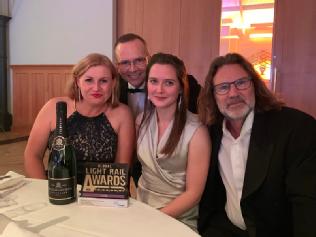 WMG’s BRAINSTORM research project, with Far-UK, Composite Braiding and Transport Design International (TDI), was presented with the Technical Innovation of the Year award at the prestigious Global Light Rail Awards.
WMG’s BRAINSTORM research project, with Far-UK, Composite Braiding and Transport Design International (TDI), was presented with the Technical Innovation of the Year award at the prestigious Global Light Rail Awards.
The Awards, dubbed as the industry’s Oscars, recognise outstanding achievements in the global light and urban rail sector.
Working with Far-UK, Composite Braiding and TDI, WMG researchers created a new design of an incredibly lightweight Very Light Rail (VLR) vehicle frame weaved from carbon fibre composites into a series of tubes to create a prototype demonstrator frame - the first of its kind.
Dr Darren Hughes, Associate Professor in Materials and Manufacturing explained: “Our BRAINSTORM VLR research 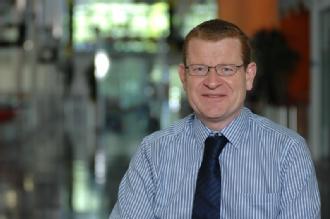 partnership has achieved significant weight-saving, allowing VLR services to accommodate more passengers while reducing the energy required to propel the vehicle and the stress placed on the rails and road surface.
partnership has achieved significant weight-saving, allowing VLR services to accommodate more passengers while reducing the energy required to propel the vehicle and the stress placed on the rails and road surface.
“The technology also ensures that the vehicle is tough for a long life in service, easily repairable when accidents happen and strong enough to protect the passengers on board.”
The judges praised BRAINSTORM for its innovation, vision and ambition to create not only new manufacturing processes but potentially a whole new industry.
One judge said: “This is what the industry has been waiting for decades. Aviation and automotive do this already, so it’s great to see a UK consortium bringing us up to that level. I can’t wait to see the first full vehicle next year.”
Find out more about the Global Light Rail Awards here.
Experience Warwick Summer School: Raising awareness of engineering in society
 The WMG Outreach Team had a busy summer term concluding with the Experience Warwick Year 10 Summer School, which ran from 3-6 July and was supported by the High Value Manufacturing Catapult.
The WMG Outreach Team had a busy summer term concluding with the Experience Warwick Year 10 Summer School, which ran from 3-6 July and was supported by the High Value Manufacturing Catapult.
The programme was created and led by Phil Jemmett and saw a total of 42 students, aged 14 and 15 years, work on mini-engineering projects in small teams. They were supported by University of Warwick student ambassadors, research staff and Graduate Trainee Engineers from WMG.
Professor Margaret Low, Widening Participation Officer for WMG explained: “The projects were designed to introduce the youngsters to key engineering skills and to help them to recognise the importance of resilience and team work.
 “The students had some fantastic ideas, including a smart city model, radio based game and remote controlled cars, which were presented to their families and teachers at a special showcase event.”
“The students had some fantastic ideas, including a smart city model, radio based game and remote controlled cars, which were presented to their families and teachers at a special showcase event.”
The Summer School, organised by Warwick Outreach and Widening Participation Team, gave the students a true insight into life at university: they got to stay in University of Warwick halls of residence, attend academic sessions and experience the social and sport facilities on campus.
Based on the success of the project, next summer it will be expanded into a full work experience programme in July 2020. To find out more contact wmgoutreach@warwick.ac.uk

